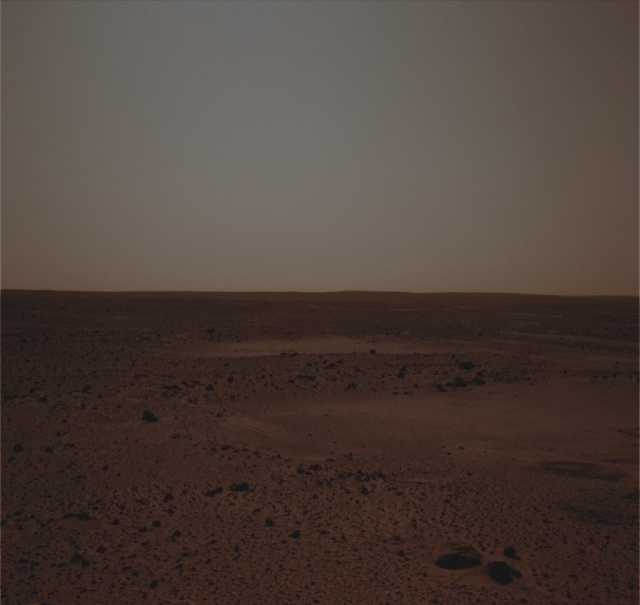
May 11, 2012
Credits: NASA/JPL-Caltech - MER Spirit - Credits for the additional process. and color.: Dr Paolo C. Fienga/Lunar Explorer Italia/IPF
|
The NASA - Mars Exploration Rover (MER) Spirit, now decommissioned, landed on Mars on January 4, of the AD 2004. The Rover was originally designed for just a 90 Soles mission (remember that a Sol, such as one Martian Day, is slightly longer than an Earth Day, being 24 hours and 37 minutes), but its mission has been extended several times as it continued to make new and profound discoveries about the Red Planet. Spirit was equipped with a powerful set of tools to study a diverse collection of Rocks and Soils that may have held clues to past water activity on Mars. These tools included multiple cameras: a Panoramic Camera (or PanCam), as well as a Navigational Camera (or NavCam), and a Microscopic Imager (MI) which obtained close-ups and High-Resolution images of countless targets. There were also several instruments for analyzing the composition of both Rocks and Surface, as well as to investigate the Mineralogy of the Region: in fact, we are talking about a Miniature Thermal Emission Spectrometer (or Mini-TES), a Mossbauer Spectrometer (or MIMOS II) which provided unique information about Iron-bearing Minerals, and an Alpha Particle X-Ray Spectrometer (or APXS) which told us the chemical makeup of many individual Rocks, Boulders and Soils. Finally, the Rover was also equipped with a “Rock Abrasion Tool” (or RAT, for short) which exposed fresh Material lying beneath the Dust as well as the so-called Weathered Rinds that typically coat all Martian Rocks. The NASA - Mars Exploration Rover (MER) Spirit landed on the opposite side of Mars from its twin, Opportunity, such as in Gusev Crater: an approx. 170 Km diameter Impact Crater which it has been estimated that it might have formed 3 (three) to 4 (four) Billion Years ago. As it can be seen from orbital imagery, a Channel System drains into Gusev Crater and this System, likely, once carried liquid Water (or a combination of both Water and Ice), at some point in Mars' past. In this light, Gusev Crater appears to be an old Lake Bed filled with Sediments. It was hoped that Sedimentary Material from its early days could be found and studied, although, at first, the Region seemed disappointing because of its lack of available Bedrock on the flat Lava Plains that form the Floor of the Crater. Spirit, eventually, made its way to the Columbia Hills (such as a small group of low-lying Hills that was about 3 km away from the Landing Site) and, finally, the Rocks examined there did show evidence of interaction with small amounts of Briny (---> salty) Water. Despite a few problems, the NASA - Mars Exploration Rover Spirit has completely worn down the drill bit on its RAT tool and its work has deeply exceeded the original expectations. This frame (which is Left Navigation Camera Non-linearized Sub-frame EDR acquired on Sol 6 of Spirit's Mission to Gusev Crater at approximately 14:56:56 Mars Local Solar Time) has been colorized in Absolute Natural Colors (such as the colors that a normal human eye would actually perceive if someone were on the Surface of Mars, near the NASA - Mars Exploration Rover Spirit, and then looked towards the Horizon and Sky), by using an original technique created - and, in time, dramatically improved - by the Lunar Explorer Italia Team
|
News visualized: 652 times

